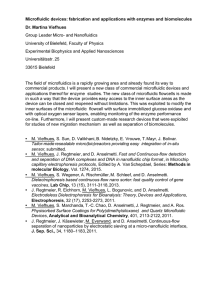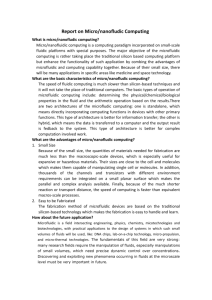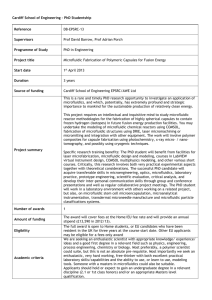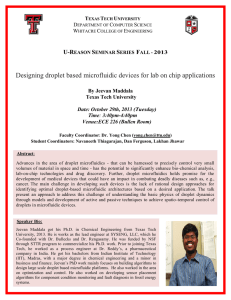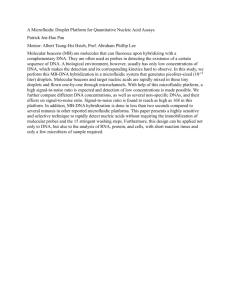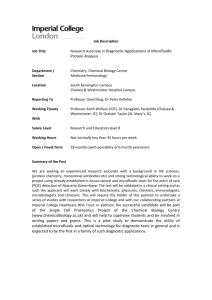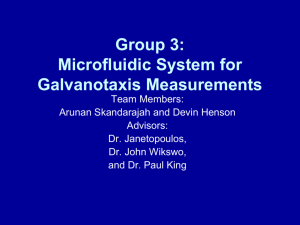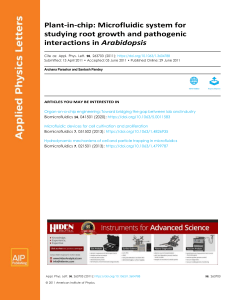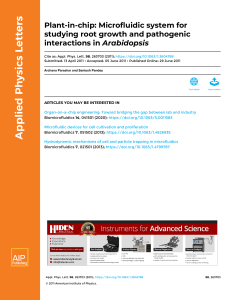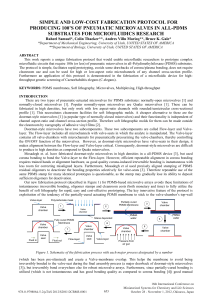MEM 419/800 Microfluidics and Lab-on-a-Chip
advertisement
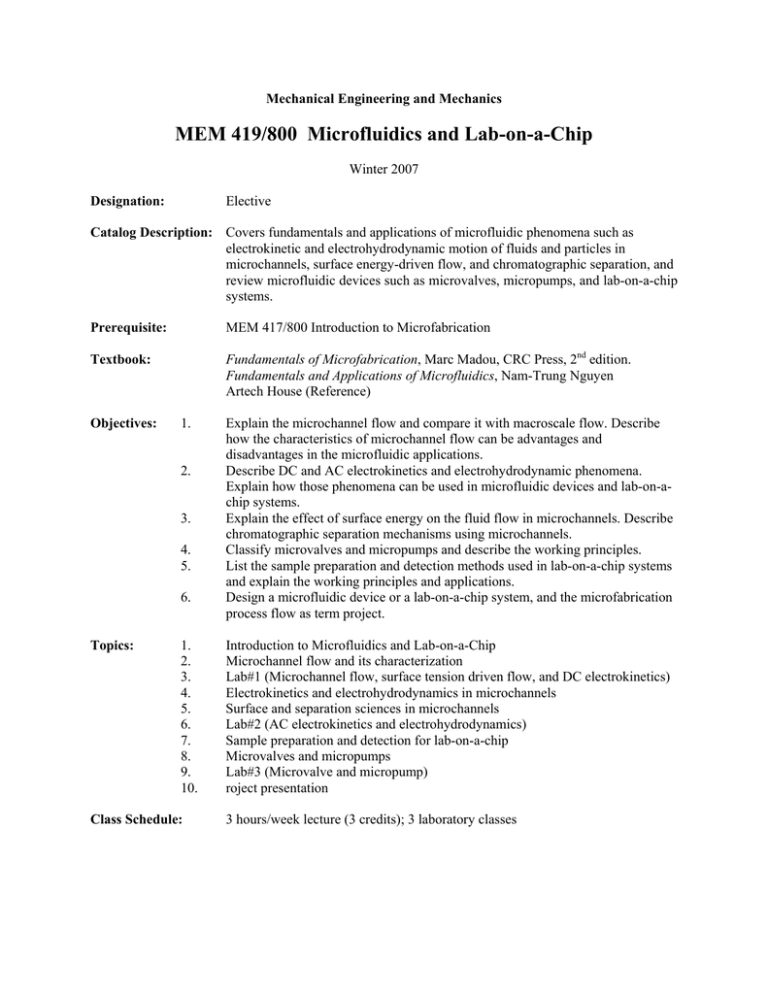
Mechanical Engineering and Mechanics MEM 419/800 Microfluidics and Lab-on-a-Chip Winter 2007 Designation: Elective Catalog Description: Covers fundamentals and applications of microfluidic phenomena such as electrokinetic and electrohydrodynamic motion of fluids and particles in microchannels, surface energy-driven flow, and chromatographic separation, and review microfluidic devices such as microvalves, micropumps, and lab-on-a-chip systems. Prerequisite: MEM 417/800 Introduction to Microfabrication Textbook: Fundamentals of Microfabrication, Marc Madou, CRC Press, 2nd edition. Fundamentals and Applications of Microfluidics, Nam-Trung Nguyen Artech House (Reference) Objectives: 1. 2. 3. 4. 5. 6. Topics: 1. 2. 3. 4. 5. 6. 7. 8. 9. 10. Class Schedule: Explain the microchannel flow and compare it with macroscale flow. Describe how the characteristics of microchannel flow can be advantages and disadvantages in the microfluidic applications. Describe DC and AC electrokinetics and electrohydrodynamic phenomena. Explain how those phenomena can be used in microfluidic devices and lab-on-achip systems. Explain the effect of surface energy on the fluid flow in microchannels. Describe chromatographic separation mechanisms using microchannels. Classify microvalves and micropumps and describe the working principles. List the sample preparation and detection methods used in lab-on-a-chip systems and explain the working principles and applications. Design a microfluidic device or a lab-on-a-chip system, and the microfabrication process flow as term project. Introduction to Microfluidics and Lab-on-a-Chip Microchannel flow and its characterization Lab#1 (Microchannel flow, surface tension driven flow, and DC electrokinetics) Electrokinetics and electrohydrodynamics in microchannels Surface and separation sciences in microchannels Lab#2 (AC electrokinetics and electrohydrodynamics) Sample preparation and detection for lab-on-a-chip Microvalves and micropumps Lab#3 (Microvalve and micropump) roject presentation 3 hours/week lecture (3 credits); 3 laboratory classes Contribution to Professional Component: Prepares students as microsystem engineers who can do design, fabrication, and testing of MEMS and microfluidic devices. RELATION TO ABET CRITERIA 3 OUTCOMES: 0 = No content; 1 = Some content; 2 = Significant content Outcomes a – k Content a. An ability to apply knowledge of mathematics, science and engineering b. An ability to design and conduct experiments as well as to analyze and interpret data c. An ability to design a system, component or process to meet desired needs 2 1 2 Explanation This course requires the students to apply engineering principles such as fluid mechanics, electrokinetics, and surface science to microfluidic phenomena and the design of microfluidic devices. The students learn to analyze and interpret experimental results through lab classes. The students learn to design microfluidic devices and lab-on-a-chip systems as well as their fabrication processes. Students from different departments learn to function as a team through term project. The problems in homework and exam, and the term project require students to identify and solve engineering problems in microfluidic device design. Evidence Lecture notes, Homework, Lab report, Project report, Final exam Lab report Lecture notes, Homework Project report, Presentation d. An ability to function on multidisciplinary teams 1 e. An ability to identify, formulate and solve engineering problems 1 f. An understanding of professional and ethical responsibility 0 N/A 2 The students learn communication skills through oral and written presentation of their term projects. Project report, Presentation 1 The impact of lab-on-a chip device on the society is discussed. Classroom discussion 1 The need for lifelong learning of new technologies is emphasized. Classroom discussion 0 N/A 2 The students are required to participate in three lab sessions in which they will have hands-on experience on microfab. and characterization tools. g. An ability to communicate effectively h. The broad education necessary to understand the impact of engineering solutions in a global/societal context i. A recognition of the need for and an ability to engage in lifelong learning j. A knowledge of contemporary issues k. An ability to use the techniques, skills and modern engineering tools necessary for engineering practice Prepared by: Dr. Hongseok (Moses) Noh, 15 November 2006 Homework, Final exam, Project report Lab report
